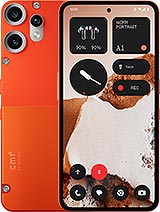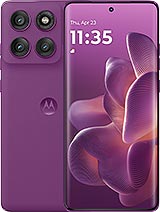A Samsung foldable display developer explains the history of Galaxy folding screens

Samsung’s first foldable, the Galaxy Fold, was introduced in early 2019. It was the result of a very long development process, explains Jason Noh, a developer in the Display Group under Samsung MX.
Work on foldable technology started as far back as 2008. To put that in context, the Samsung Galaxy, the company’s very first Android phone, came out in 2009. 2008 was the year of the Pixon and Omnia, early touchscreen-based smartphones.


Jason Noh • Samsung’s very first foldable, the Galaxy Fold
“Our team had to create a high-quality display that could be folded but resistant to debris — which meant we had to change the plate supporting the display,” explains Noh. One of the early advancements was the development of Pressure Sensitive Adhesive (PSA) that helps the display when folding in various conditions and environments.
Another major material advancement was the Ultra Thin Glass (UTG), which was introduced with the first Galaxy Z Flip in 2020. UTG has become a standard component of folding displays. “With the adoption of UTG, we were able to deliver a clearer display — complete with a premium look and feel that had yet to be seen on a foldable smartphone. UTG has been used ever since,” says Noh.
Fast forward to 2024 and the Samsung Galaxy Z Fold6 and Z Flip6, which introduce a so-called “Protect Layer” structure. A key component of that is yet another innovative material, Shear Thickening Fluid (STF). STF adapts to different amounts of pressure so that it resists deformation from impacts. This has made the 6-series foldable displays the most durable yet.


The latest Galaxy foldables • Carbon fiber and metal plates
Jumping back in time to 2021, the Galaxy Z Fold3 and Z Flip3 were the first foldables to feature water resistance with a high IPX8 rating. This was done using a rubber band that runs around the perimeter of the display and seals it against liquids. And back to 2024 with the Galaxy Z Fold6 and Z Flip6, which are the first foldables with particle ingress protection, IP48.
This was achieved with improved sweeper technology – small brushes that keep debris from entering the gaps between the front of the device and the hinge.
The S Pen stylus is another piece of iconic Samsung tech and it made sense to marry the Fold and the S Pen with the Galaxy Z Fold3. Easier said than done since the metal plate used as screen backing in earlier models created interference that messed up the S Pen digitizer.
Instead, Samsung had to switch to a carbon fiber plate. That still wasn’t enough – the digitizers are on the left and right side of the display and they had trouble detecting the S Pen in the folded part of the display. Developers created a solution to this using “sophisticated calculations”.
“As a pioneer of the foldable smartphone, our team has accumulated knowledge and experience on what users expect from this form factor. To meet those expectations, we will not stop our journey toward the perfect display experience. The Galaxy Z series will constantly undergo improvements to prove Samsung’s title as a trailblazer in foldable smartphones,” said Noh.
Related
Reader comments
- jnd
- 14 Jan 2025
- mgQ
One thing is to have top specced hardware, other thing is to have the OS and software tuned up to make use of the hardware, for example multitasking with all apps on the inner display, DeX mode and so on. And another is long term support and service ...
- Vegetaholic
- 09 Aug 2024
- C9n
You bet they are desperate, Chinese manufacturers left and right smashing their shitty Fold series design and hardware wise
- Vegetaholic
- 09 Aug 2024
- C9n
Oh I see, is that also the reason why Samsung Folds are 3 years behind in designs then Chinese counterparts? 🤣







 Xiaomi
Xiaomi Nothing
Nothing Samsung
Samsung OnePlus
OnePlus Motorola
Motorola


